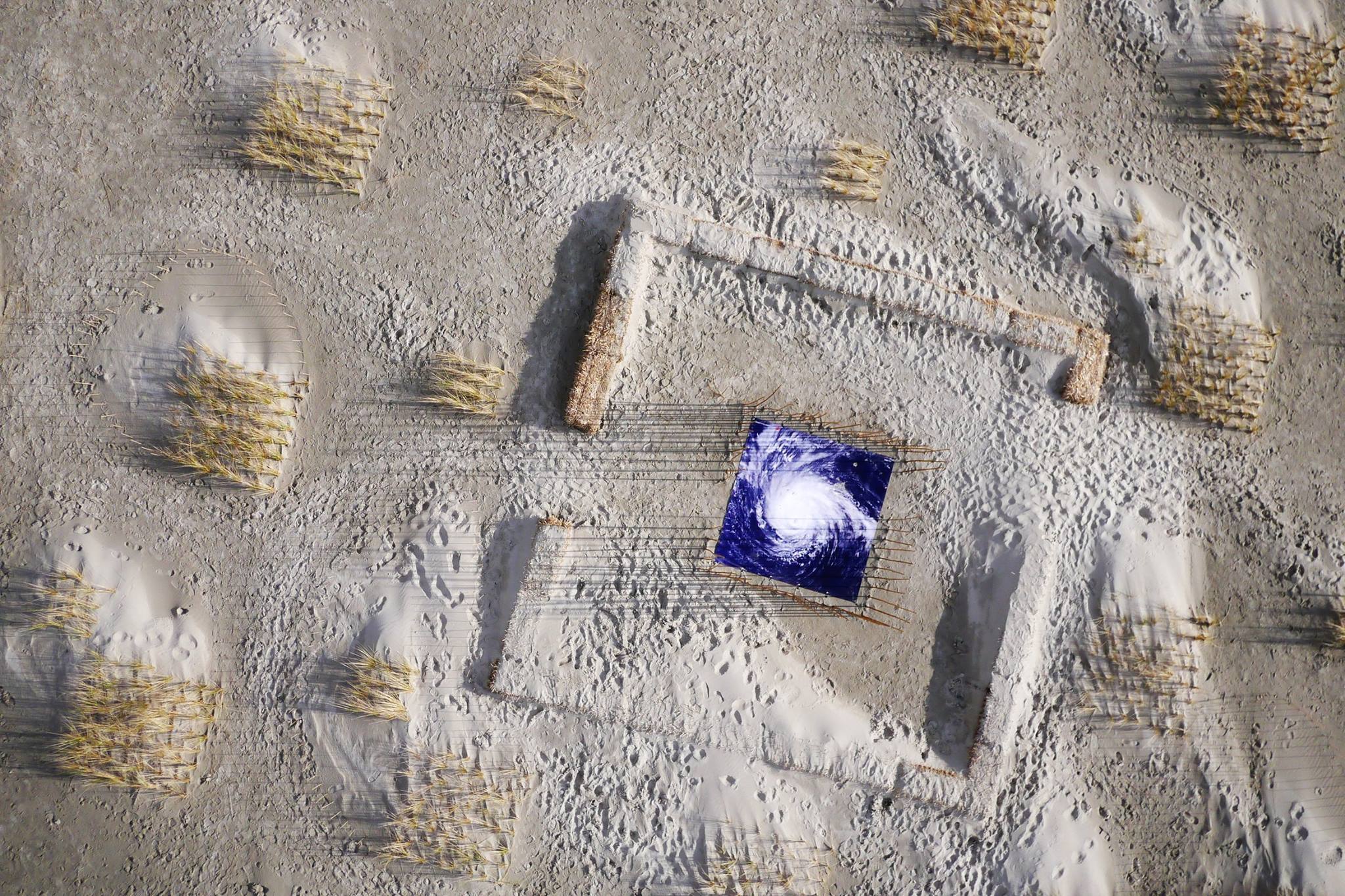About the statue
The statue consists of two metal welded 5 meter high women. One big woman, the other one slender, looking out over the sea. You can position yourself in-between these women, and take their hand. The statue represents the search for balance and exchange.
Jan Ketelaar is an artist from Friesland. In 2002 he graduated from the Minerva Academy,
cross-disciplinary sculpture. By the name of ‘Potzenmakerij Ketelaar’ he makes so called ‘potzen’: serious jokes.
He exhibited in e.g. Portugal, Bremen and New York.
Several times he travelled (by fork truck) through the Netherlands with his very tall statues.
In 2014 his Royal fence was placed around the 1st Royal lime-tree in the Netherlands. The fence was a bench, shaped of lime-tree leafs.
Apart from being a sculptor, he also writes and publishes poems.
In 2008 and 2012 he was in the final of the NK Poetry Slam.
Last year his first bundle was published: “Of a man who thought, I don’t want to think anymore”.
As a “potzenmaker’ he organizes literary and cultural meetings. He is also a planner.
In 2014 the policy regarding the search for lapwing eggs in Smallingerland changed on his initiative.
Expected realisation: September 2018
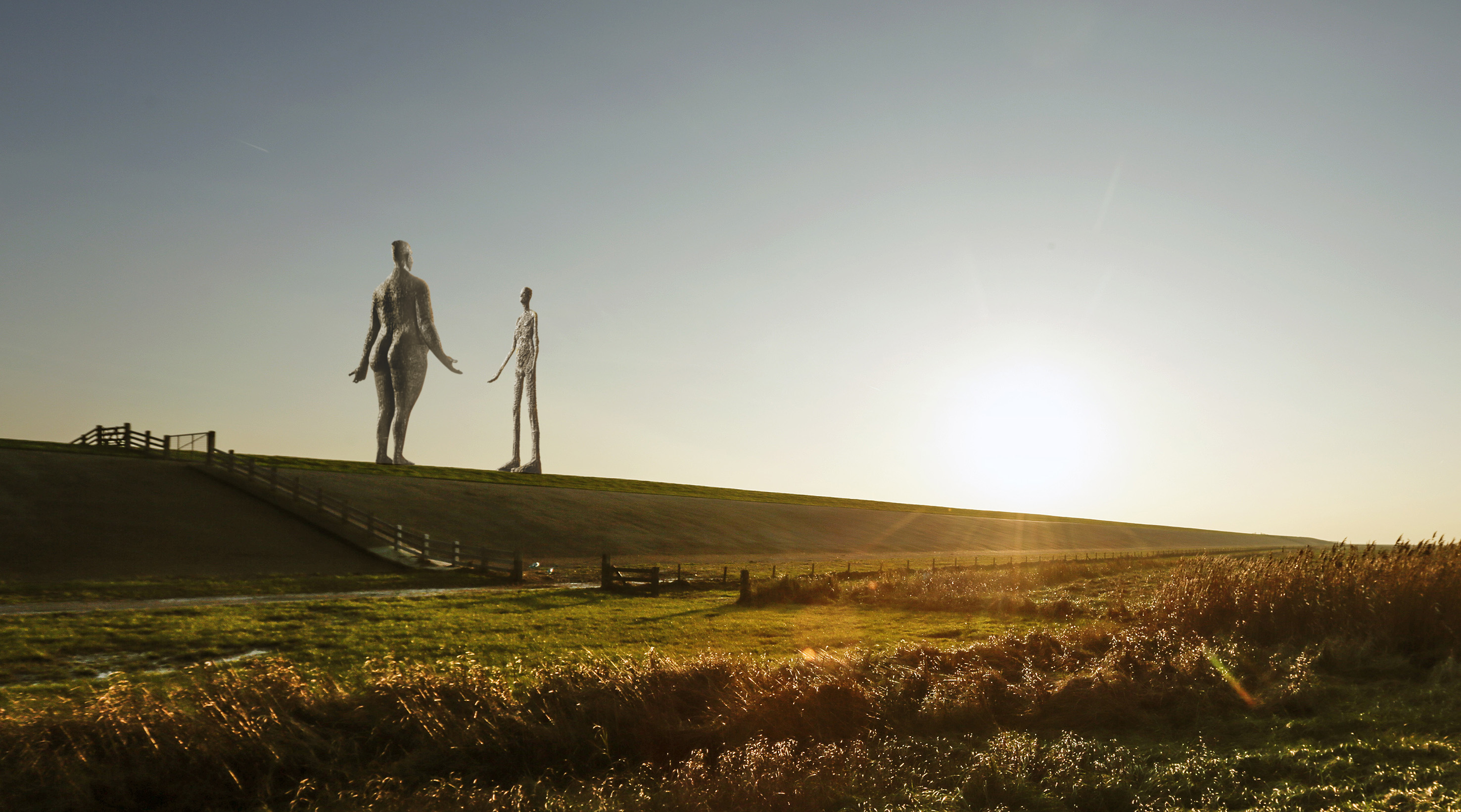
Kerend Tij (Turning Tide)
Sense of Place is presenting two new exhibitions, both of which will open at venues in Leeuwarden on April 4, 2018. At the city’s Aegon building and the De Kanselarij ‘open community’, you will get a chance to smell, taste and experience the former Dutch Middelzee, the estuary mouth of the River Boorn (now located in Friesland province) which used to run northward to the Wadden Sea.
Exposition Aegon building by Alex van de Beld.
Exposition De Kanselarij by Bruno Doedens.
Alex van de Beld studied at ‘de Academie voor Bouwkunst’ in Groningen. After 20 years as partner in Onix Architecture and over 100 architectural projects being build, it was time for him to move on.
Many things has changed in the field of architecture; unclear politics and unstable economic conditions make clients request new approaches in order to reconnect the profession to society.
A couple of years ago, Alex began working from a different perspective in the periphery of architecture and founded
ALBSurroundings. He will continue his international search on behalf of Onix Sweden…
Working in the peripheral surroundings, Alex tries to discover new connections between landscape and design, art and theory, politics and urbanism, culture and education. Above all, his mission is to mediate the way people live in man-made environments.
Bruno Doedens (1959) studied at ‘de Academie van Bouwkunst’ in Amsterdam, specialising in Landscape architecture. In 1990 he wins the ‘basisprijs Prix de Rome’ – Landscape architecture. Together with Maike van Stiphout he starts bureau DS in 1993. They win the international contest for designing two parcs at the Potzdamer Platz in Berlin. Both have been realised. In 2005 Doedens continues on his own, from 2007 as initiator and artistic director of Slem. Besides expertise and crafts, the focus in all his projects lies on illusions. The fascination to ‘make the impossible possible’, or ‘to turn water into wine’, and the focus on the long term and the social and cultural values, predominate.
For more information: Bruno Doedens
Exhibition dates: from 04.04.2018 to 25.11.2018
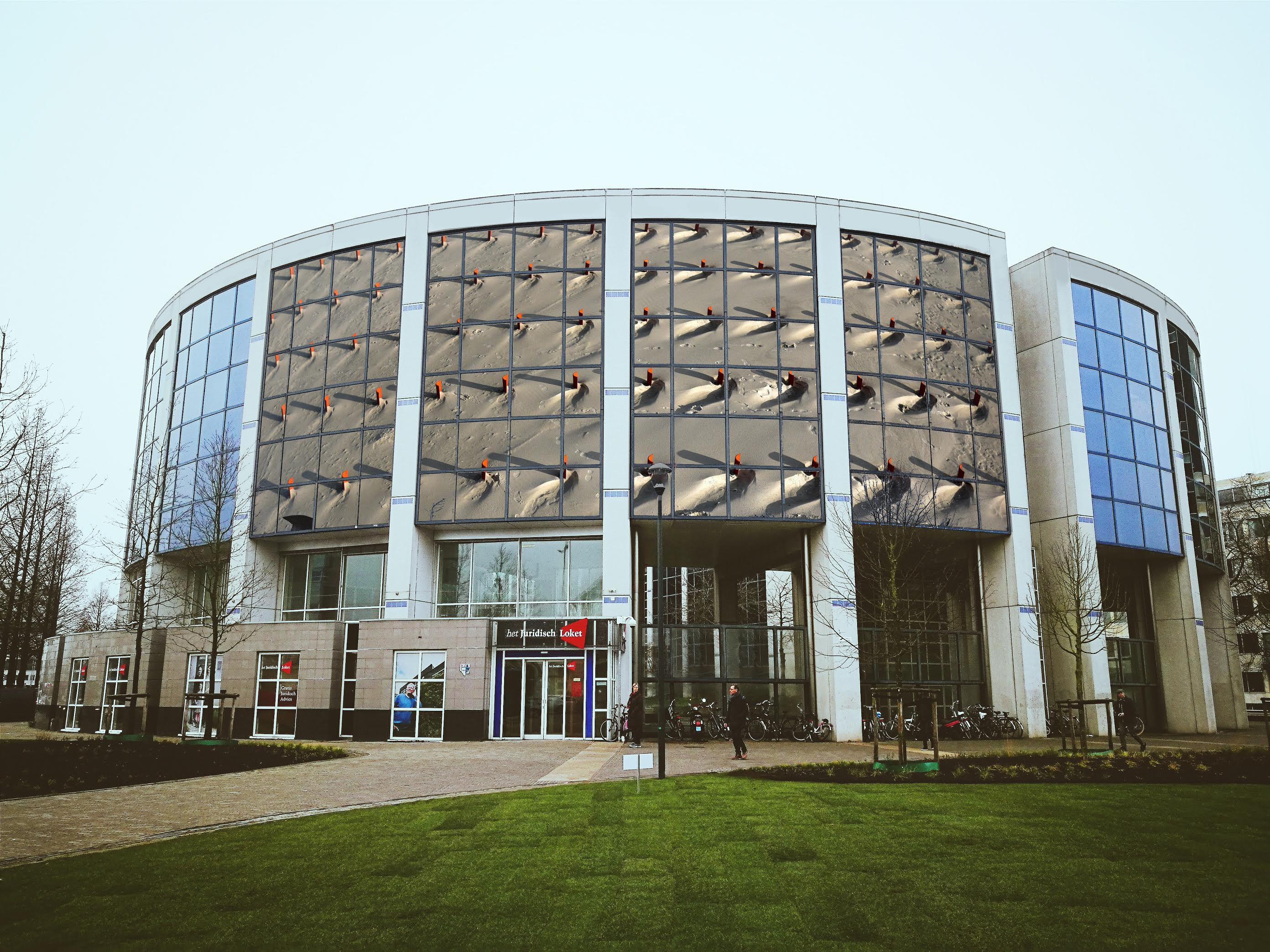
From the dizzying heights of the Camera Batavia watchtower – located on the Waddendijk dike near the Frisian village of Ternaard – you can observe the view from all directions through the unique perspective of a vortex mirror. It’s a disorienting and new experience that will offers a new, refreshing take on the landscape.
Test versions of the Camera Batavia tower were previously on display at the 2015 and 2016 editions of the annual Oeral festival on the island of Terschelling. The final version of the tower will be erected in Ternaard in 2018. You can experience the mirror image from the tower both on sofas in the exterior space and from the closed interior space (similar to a camera obscura).
Born in the Frisian town of Heerenveen in 1967, Arjen Boerstra currently lives in the village of Den Horn in Groningen province and works in the city of Groningen. He attended art school at Groningen’s Academie voor Beeldende Kunst Minerva, where he earned his degree in 1993. His work features a combination of installations, video, photographs and performance art.
Boerstra on his Camera Batavia project: ‘I decided to reconstruct the attic room from my childhood as a type of memory exercise and also to revisit some of the things that used to fascinate me as a child. I was an inquisitive and creative kid, and it was by rediscovering and observing the world around me that I got to recreate some of those early experiences.
The work should be regarded as an invitation to view the environment or a particular situation from a fresh and different perspective.’
Realisation: July 2018

Another startling work which challenges people’s perceptions of the land and its uses is artist Nienke Brokke’s ‘Dijk van een Wijf’, a huge sculpture of a reclining female nude, formed from the earth and green grasses of the dike near the Frisian village of Holwerd. This organic monument – around 20 metres high at the hips and shoulders – forms a barrier between the land and the sea, sheltering the nursing grounds of seed, soil and people from the sea.
The dyke is a body which we trust and support, behind which we can hide from the dangers of the sea. The dyke as patron of North Friesland, sheltering the nursing grounds of the seed potato and soil for numerous other vegetables. Together with the sea barrier, she provides security, safety, as unconditional as a “Dijk van een Wijf” should!
This ‘land art’ project created by Nienke Brokke on the dike at Holwerd will serve as a warm welcome for all travellers from Ameland.
The visual work of Nienke Brokke always has a context with a narrative element. Her theatre design studies at the Rietveld Academy have contributed to this. As theatre is always a ‘gesamtkunstwerk’, Nienke likes to involve multiple art disciplines which together form a whole. Thanks to this narrative side, Nienke Brokke also designs education projects, in addition to IM and theatre décors. She is skilled in connecting the content with an art discipline.
The land art proposal ‘Dijk van een Wijf’ was her graduation project at the Rietveld Academy in 1997, and we are working hard on making it reality in 2018.
For more information: NienkeBrokke
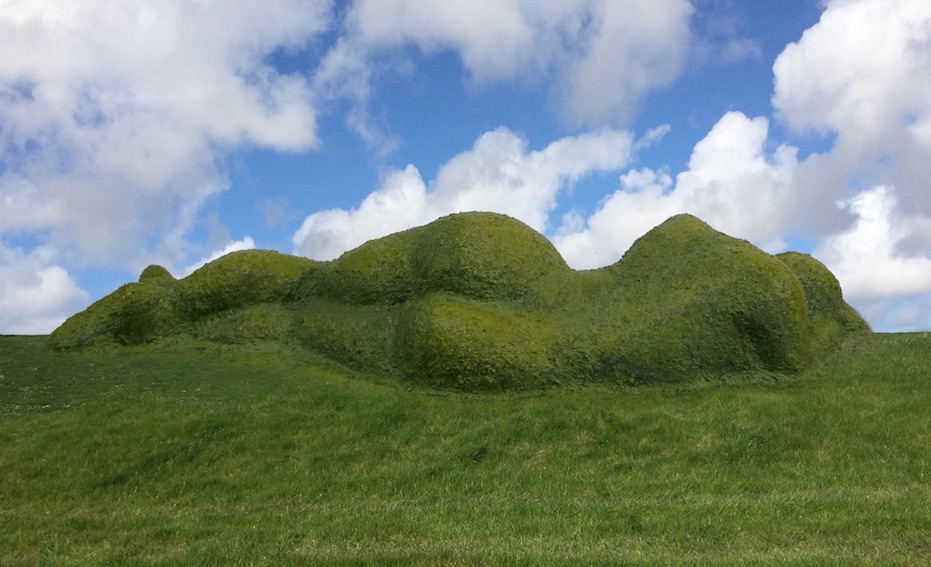
This exhibition of the ‘Blije Church’ photography project by Maarten Boersema, a pastor in the Frisian town of Blije-Holwerd, tells the story of the life of a village preacher and community life in an area beset by a declining population. These intriguing, inspiring, often stunning and affecting pictures show the life of one person in a village community, along with the important role faith plays in this deeply religious North Frisian town.
Boersema will be exhibiting a selection of the photographs in conjunction with Sense of Place in 2018. The mood of the ‘Blije Church’ is replicated inside the barn of an authentic old farm. The artist has selected some of the most arresting images, depicting beauty and horror, good and evil, and joy and despair.
After earning his Master’s degree in Theology from the Theological University of the Reformed Churches in Dampen, Overijssel province, artist Maarten Boersema (b. 1986) joined the Liberated Reformed Church in Blije-Holwerd as a part-time preacher in September 2014. He began his blijekerk.nl project that same month. In recent years he has also honed his talents as a photographer and author, having published both his written work and his photographs in publications such as ManagementTeam, Discovery Magazine, Medisch Contact, Nederlands Dagblad, Huffington Post and The Scientist.
http://www.blijekerk.nl/
Expected exhibition dates: 01.05.2018 to 01.12.2018

This project by artist Esther Kokmeijer features a sea of cornflowers stretching from the village of Holwerd all the way to the Wad (mudflat). The initiators of the Holwerd aan zee project seek to restore the link between the Wadden Sea and the village of Holwerd through a breach in the dike. In summer 2018, a carpet of blossoming, sky-blue cornflowers will cover part of the course of this future new waterway, thereby symbolising the ideal of ‘Holwerd aan Zee’ (‘Holwerd by the Sea’).
Esther Kokmeijer (born in Brantgum in Friesland in 1977) earned her degree from Hogeschool der Kunsten in Kampen, Overijssel province. Having travelled across the world, she explores in her travels the world’s complexity and seeks to recreate this in her art, taking a keen interest in the interaction between people and the landscape.
Expected exhibition dates: summer 2018

Drie Streken (Three points of the Compass) is a wooden structure created by the visual artist Marc van Vliet that changes with the tides.
The artwork is ‘illuminated’ from three compass points through three large standing mirrors, placed kilometres away, which reflect the sun. Based on the sun and the tidal forces (and the moon), the artwork’s form change with the tide. This almost imperceptible variation occurs twice a day.
Visitors can reach the wooden artwork on foot: during ebb across the mudflat, and during tide across the 100-metre-long pedestrian bridge. It is a meeting place that offers a different perspective on the vastness of the Wadden landscape by the hour and the day. The visitor’s gaze is directed outwards during the ebb tide, and inwards during the flood.
A rough version of this artwork was displayed at the Oerol festival in 2015, and it has since been further refined and adapted so it can be set up in different parts of the Wadden Islands. As part of the European Capital of Culture celebrations in 2018, the Drie Streken artwork will be on display in the Wadden Sea at Hoek van de Bant.
About Marc van Vliet
Born in Den Bosch in 1961, this visual artist, theatre producer and designer is a resident of Overschild in Groningen province.
Self-taught in several disciplines and having started out as a designer, Van Vliet has risen to prominence over the past 17 years mainly through the location performances and installations of the Tuig theatre group with which we has been affiliated, which are characterised by a hybrid of images, motion and sound. In recent years, he has tended to focus on landscape installations.
Expected exhibition date: this project is under development

This new walking route will take you along a site known for a memorable episode in Friesland province’s recent history.
When a huge storm surge pushed seawater into the earth outside the dikes of the village of Marrum on the night of October 31, 2006, 150 horses ended up stranded on a knoll (a type of small island) behind the dike. After a joint effort involving wranglers, firefighters, veterinarians, animal welfare officers and the Dutch Army had failed to bring the animals to safety, six local women on horseback successfully herded all but one of the horses across the path. It was an extraordinary event, and the story of the Marrum Horse Rescue is etched in the collective memory of Dutch nature lovers and horse aficionados alike. A memorial was subsequently erected in 2011 to mark the bravery and ingenuity of these women.
At the initiative of Plaatselijke Dorpsbelang, a local interest group, a new walking route was designed that leads to the site of the rescue and which connects to the walking paths behind the dikes. The Noordoost aan het Wad project, which was launched in 2016 by the Agenda Netwerk Noordoost (ANNO) network of the communities of Dantumadiel, Dongeradeel, Ferwerderadiel and Kollumerland, is a development partner in this project.
‘Noord-Fryslân Bûtendyks’ consists of summer polders, ‘dobben’, salted grasslands, mud fields and salt marshes. The area is over 4180 hectare. You will find many birds here, including meadow birds like the redshank and yellow wagtail. They are joined in winter by the brent goose and barnacle goose, finding their food for the winter.
Salt-loving plants are responsible for the beautiful colours in this area. Planten die er onder andere voorkomen zijn zeekraal, zeeaster, schorrekruid, spiesmelde, gewone zoutmelde, zeeweegbree, melkkruid, aardbeiklaver en zee alsem. Op de hoger gelegen delen komen er vooral zwenkgras, herfstleeuwentand en zilverschoon voor.
‘Dobbepaarden’ is a project in collaboration with It Fryske Gea.
Realisation: July 2018
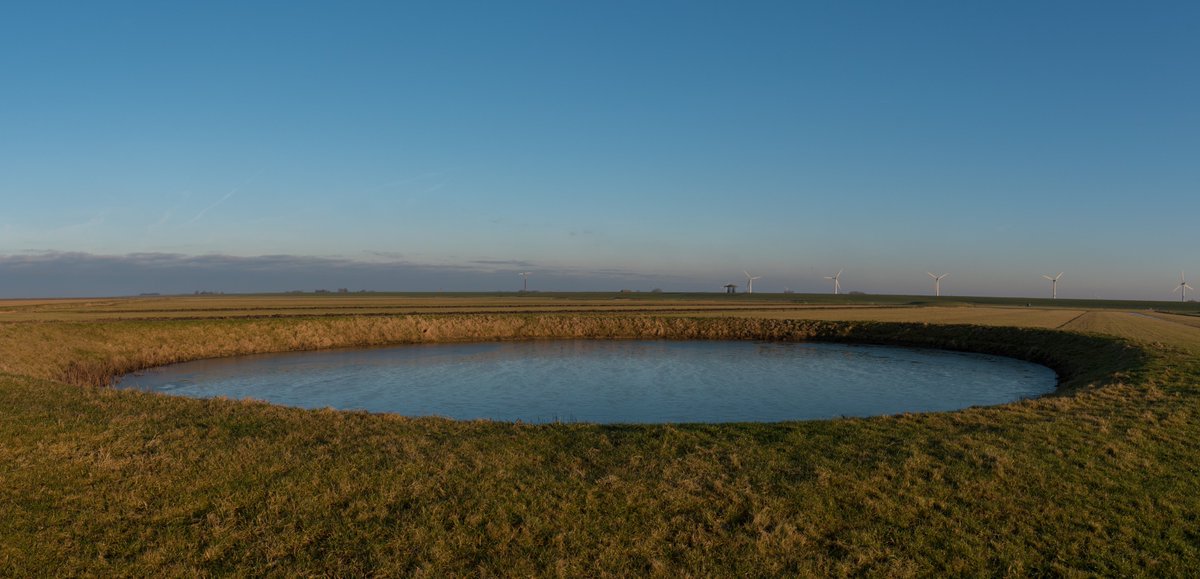
The Kromme Horne has it all: an abundance of light, vastness, serenity and spectacular panoramas. If you enter this curved pier at the village of Wierum, you will find yourself surrounded by hollows, salt marshes and plates, accompanied by the infinite light. At the end, like a ship on the horizon, you will spot a sculpture. Go on board and wander through the halls, whose windows will lead you to destinations unknown…
A curved 550-metre pier will run along the dike near the village of Wierum in the future. Visitors can walk across the pier, which runs mostly along the old pier and protects it from further decline. As they walk above the water and the slurry and along three panoramic views and dwellings, they experience the beauty of this unique landscape. The tidal pool appears like a mirage, a ship with the bow turned toward the north: this is where the light is caught in a room – a room which provides protection from the wind and the sun and which entices you to linger, walk out onto the mud flats or swim or paddle in the water.
The Kromme Horne landscape object was created by and for people and in harmony with the natural world. The three ‘roundabouts with exits’ represent the spaces where the tide is caught. The leads to the creation of blowholes which – due to the currents – have had their appearance transformed over the decades. The landscape will be home to salt marshes and rift valleys, with mussel beds to be installed at one and vegetation planted at another, while the presence of the pier will also cause the existing salt marshes to grow again.
In an effort to revitalise their village, several of Wierum’s residents decided in 2016 to explore opportunities for new recreational facilities. Many different ideas were proposed and brainstorming sessions were held, including an exchange of ideas and various drawings. It was clear that a spatial element needed to be added to highlight Wierum’s visual qualities: the salt marshes, the mudflats, the endless dikes, the tranquillity, the tide, the colours, the light, the unique history, and the link to local shipping and hiking routes. The visual artist Ruud Reutelingsperger, a member of the Observatorium artist collective, became involved in the initiative, which ultimately resulted in this project.
The upshot was that the residents of Wierum saw a longstanding wish become a reality.
More information: dorpwierum and observatorium for the great design!
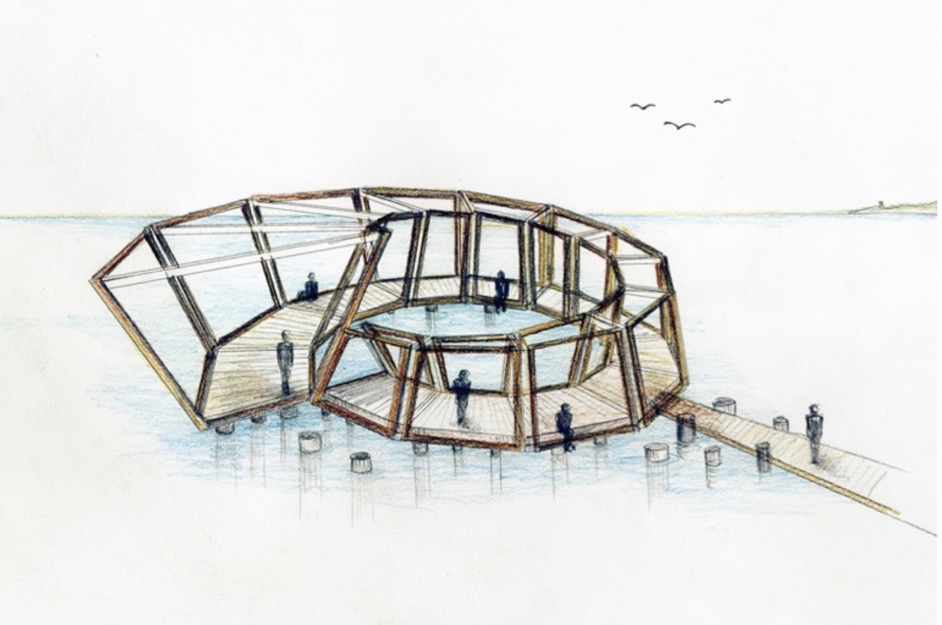
Het Bildt wheat fields art project.
Picture this: summer 2018, wheat fields rippling in the wind in het Bildt; the clay land along the Frisian Waddendijk dike. The sight of drawings by several Bildt-based artists carved into the local wheat fields is nothing short of spectacular on this agricultural land, traversed by the straight lines of dikes, waterways and ditches. A long-time resident of het Bildt, artist Henk Rusman, who conceived the project, creates massive statues of steel and stone patterned on the local scenery. When the artist gazed out across the wheat fields one summer, he had the ingenious idea of creating ‘art in the wheat’. We previously got a taste of this style in 2017, when he and fellow artist Marco Goldenbeld created a work of art inspired by Escher’s ‘impossible cube’. For the 2018 project, Rusman invited several artists from het Bildt to supply designs for his ‘Art in the Wheat Fields’ project. The works will be displayed during the Bildtse Aardappel weken (Bildtse Potato Weeks) in 2018. If you don’t suffer from vertigo, you can view it all from the Ferris wheel brought in especially for the occasion!
Born in Hillegom in South Holland province, Henk Rusman attended the Stadsacademie and Jan van Eijck academie, two art colleges located in Maastricht in Limburg province. A long-time resident of het Bildt and renowned in the Netherlands and beyond for his larger-than-life works, he received the Bildtse Kultuurprijs, an award acknowledging contributions to local culture, in 1993.
Expected exhibition dates: summer 2018
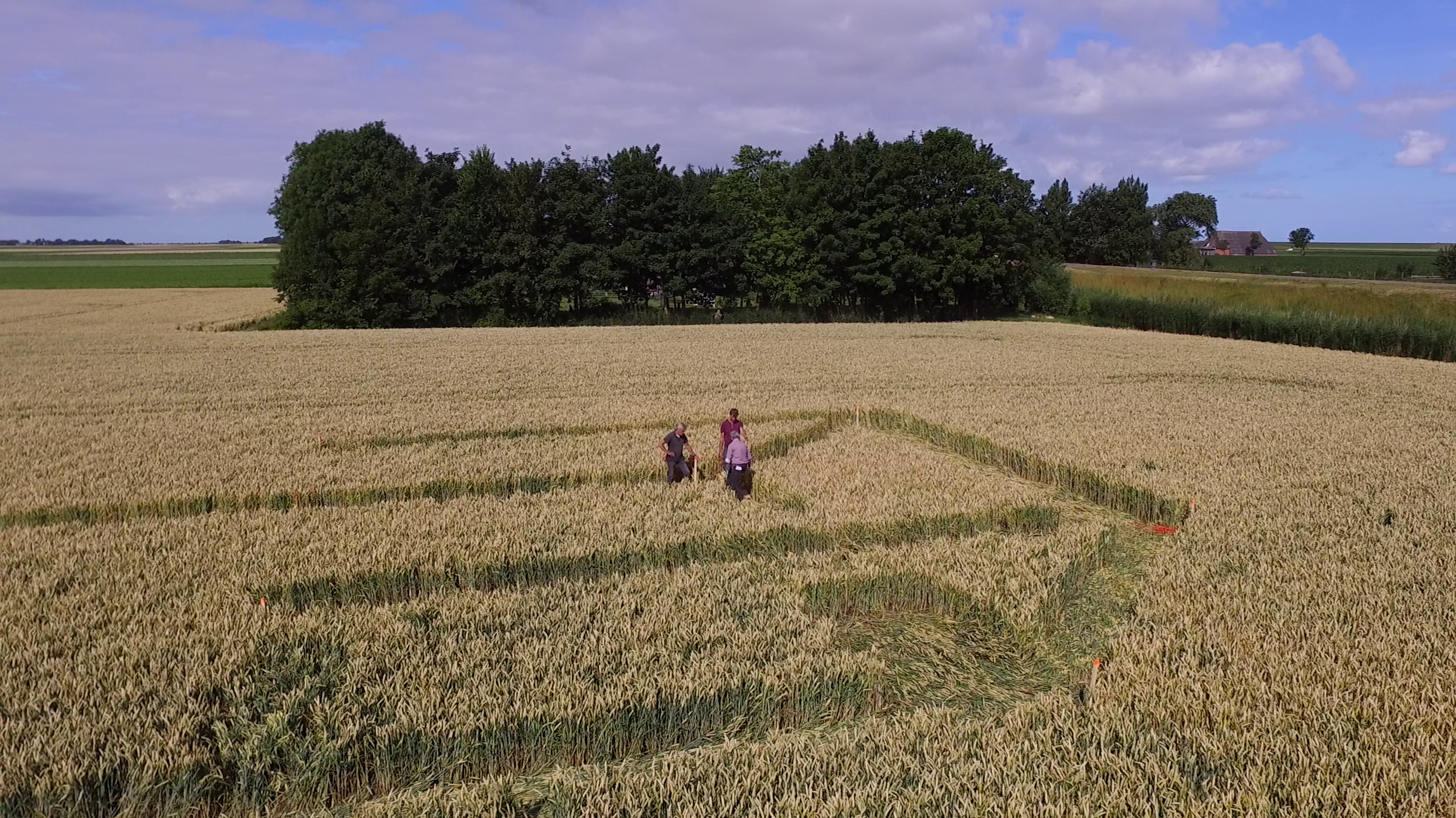
The ‘Men of Holwerd’ installation, created by artist Linette Raven, is a tribute by Sense of Place to the four initiators of the ‘Holwerd aan Zee’ (‘Holwerd by the Sea’) project. The installation depicts a sea lock with flowing water, featuring four life-size portraits of men at the interior of the lock. Visitors walk through a corridor of potato crates and stand eye to eye with these extraordinary men.
Through the ‘Holwerd aan Zee’ project, the initiators seek to break the negative spiral of population loss and economic decline in the village, proposing that there must be a breach in the dike in order to restore the link between the Wadden Sea and the hinterland. Residents, hydraulic engineers, businesses, artists and nature lovers are all keen to devote their talents and energy to the project, which represents a dynamic interaction between man and nature, water and land, and old and new. It presents both an economic opportunity for the village and the area as a whole, and an ecological opportunity for the Wadden.
A portrait photographer who likes to tell the story of ordinary, everyday people through her pictures, Ms Raven both initiates her own art projects and collaborates with others. One of her best-known works is Fan twa kanten (‘From Two Sides’), which features 182 portraits of residents of Terschelling island, presented in a life-size format in an outdoor location. She is also renowned for Pioniers van de Wieringermeer (‘Pioneers of the Wieringermeer’), featuring portraits of the first 40 residents of this polder. For further reference, see the Sense of Place project ‘Bildtstars en Eigenheimers’ (‘Bildtstars and Eigenheimers’)
Expected exhibition dates: from May 2018 until 2019
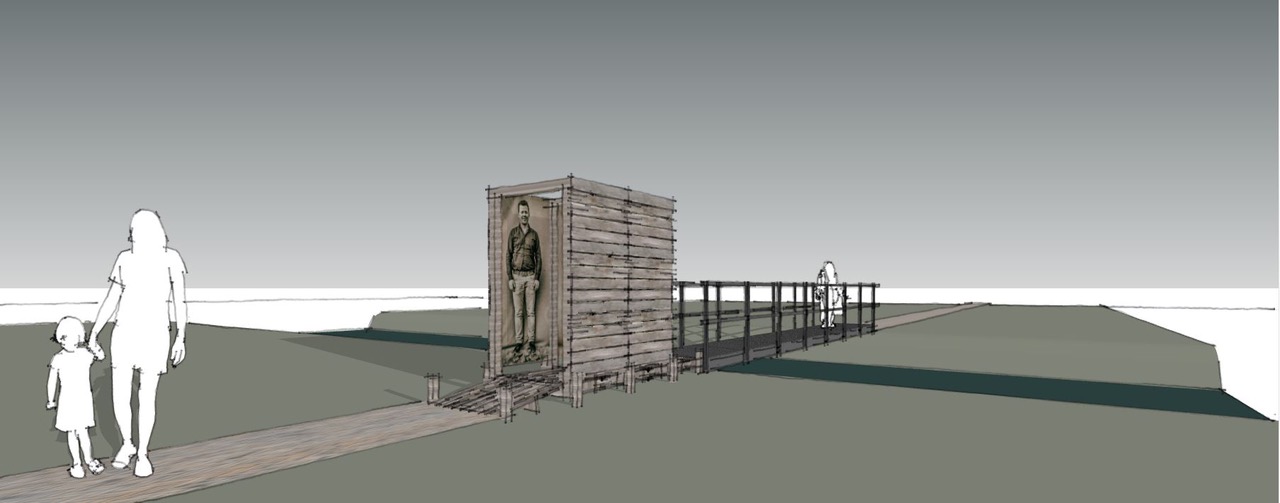
“Mound of the future”
Mounds (terpen) are an important feature of the Frisian landscape. Their long and rich history in the area appeals to the imagination, while they also raise questions when it comes to archeological details and serve as an inspiration for art, culture, and future developments in the area.
Various people have dreamed of creating the Terp fan de Takomst (‘Mound of the Future’) for some time: a new mound outside the dikes, for research and educational purposes, as a model for the original design, to experiment with new and old brackish crops, and as a place for reflection and contemplation.
The village of Blije has taken the initiative to actually build its own Terp fan de Takomst (‘Mound of the Future’). The village, which feels closely connected with the mudflats, states in a report in which it outlines its vision, “We want to face the Wadden Sea again as we live our everyday lives.” A central element of their plan is to build a new mound outside the dike, at the level of Blije village. Their objective is to create a new place of inspiration, to attract people to the village and the Wadden coast, to share ancient tales with one another, and to create new narratives.
A partnership of Dorpsbelang Blije, It Fryske Gea, the Terpencentrum (a scientific research body part of the Groningen Institute of Archaeology, which is affiliated to Groningen University), and Sense of Place, has established a project group with the objective of turning this dream into a reality.
The first concrete steps will be taken in 2018, the foundation for the path will be laid, and the fundamentals will be put in place for the We wolle ús klaai werom (‘We Want Our Clay Back’) project.
Created by the Observatorium artists collective, the design for the Terp fan de Takomst project is conceived as an ‘artwork’ which appeals to the imagination of every stage of the development process, and serves as a destination for residents and visitors at each of these stages: a ‘Growing Mound’.
Mounds range in size from narrow (5 metres) and low (1 metre) to wide and high (up to 10 metres). Depending on their size, mounds can support anything from one house to a small hamlet to a church, and through the Groeiende Terp (‘Growing Mound’) the Observatorium artist collective wants to visualise and make people experience this process of stacking different layers on top of each other.
Designers are carefully outlining the future shape of the Mound using piles and a spiral pattern, starting at the bottom and ending at the top. The various stages are arranged horizontally, rather than vertically, thereby ensuring that each stage in the growth is and remains visible. One of the mounds will support a house and includes a core platform; a knoll will be added complete with a wall, and the drawing of the piles will ultimately result in a fully developed mound. The beginning is marked by a platform and the end by a wall (as a cross-section) of wood piles at the eventual height.
The clay will be supplied over the years, until the vision has been fully realised and the mound is exactly as it should be.
Expected exhibition date: this project is under development

Few people are aware that a large number of the nearly 1,000 mounds (terpen) found in Friesland province at one time have been excavated, with the clay being used to enrich the peat soil and sandy soil in more economically disadvantaged areas. Although canals were dug, railway lines installed, and so on, the episode – which involved a massive operation – is barely a footnote in local history books. In order to revive this part of the province’s history, researchers are attempting to establish what happened to the clay, and the local population has been symbolically reclaiming the clay by sourcing it from different areas.
The village of Blije is currently building the Terp fan de Takomst (‘Mound of the Future’). In the autumn of 2018, toward the end of year in which Leeuwarden and Friesland are the Cultural Capital of Europe, the village will request all villages and farmers from the North of the Netherlands to return a small shovel or wheelbarrow filled with the ‘relocated’ clay to the village of Blije. This will then be used to plant the Terp fan de Takomst, a safe new meeting place outside the dike. The return of the clay will be commemorated in a special way.
We wolle ús klaai werom is a one-day event designed to raise awareness of the rich history of the Frisian landscape
Exhibition date: 18.09.2018

The photo installation ‘Bildtstars en Eigenheimers’ gives an identity to the potato farmers from the provinces of Friesland and Groningen. Potato farming is one of the most distinguishing features of the Wadden Area scenery, while the potato farmers themselves are significant to the Frisian and Groningen identity and culture. Their land also gives them a special role in the scenery of both provinces, and the portraits painted by Linette Raven lift them out of their anonymity. Their portraits are exhibited under various bridges in Friesland province (until the end of 2018) and in potato fields along the Wadden coast (2019 and beyond).
A portrait photographer who likes to tell the story of ordinary, everyday people through her pictures, Ms Raven both initiates her own art projects and collaborates with others. One of her best-known works is Fan twa kanten (‘From Two Sides’), which features 182 portraits of residents of Terschelling island, presented in a life-size format at an outdoor location. She is also renowned for her ‘Pioniers van de Wieringermeer’ (‘Pioneers of the Wieringermeer’) series, featuring portraits of the first 40 residents of this polder.
The De Nollen landward dune area in Den Helder is home to the ‘landscape of the imagination’. De Nollen is an existing art project featured in the Sense of Place programme. What once began as an artistic experiment in this old, neglected area has evolved into the life’s work of the artist R.W. van de Wint (1942-2006). He spent 25 years working on paintings, steel sculptures and large structures which are closely entwined with the dune landscape. The location and the image imbue the picture as a whole with meaning. Combining simplicity with complexity, his work is possessed of a real vitality that captures the viewer both visually and physically. In a world that’s changing at an increasingly faster pace, the artist sought to evoke a world of elementary images which have been the same for centuries: the light, the transition from light to dark, and the experience of colour.
This garden created by Van de Wint is reminiscent in style to the Henry Moore Studios and Gardens in Hertfordshire, England; Ian Hamilton Finlay’s Little Sparta garden at Dunsyre in the Pentland Hills near Edinburgh, Scotland; and the art collection at Museum Insel Hombroich near Neuss, Germany.
Reindert Wepko (Ruud) van de Wint (1942-2006) withdrew into the old landward dune area De Nollen after 1980, having stopped exhibiting in European museums at that point. De Nollen was to become his life’s work. Van de Wint is renowned for the paintings which grace the halls of the Dutch House of Representatives and ceiling frescos in the Groningen City Hall, as well as the working quarters of former Queen Beatrix of the Netherlands at Noordeinde Palace. In addition, he created around 35 sculptures, which are spread throughout the Netherlands. In 2002, an exhibition of his work was staged at the Kröller-Müller Museum in Otterlo: R.W. van de Wint. Clair-obscur. Seven Statues.
For more information: projectdenollen
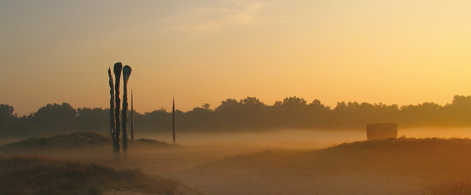
Inspired by Piet Mondrian’s ‘Pier and Ocean’ painting, we are restoring and developing 30 hectares of new salt marshes on the southern end of Terschelling island in a pattern of dams and poles which are perpendicular to each other. In the unique and innovative nature of the open salt marsh structure, the slurry sinks and ‘pioneer’ plants will sprout up everywhere. This is a perfect example of how natural and cultural elements can be integrated.
In addition to being home to a rich ecosystem, this area also has salt marshes, which have a high conservation value and high gross and net primary productivity.
The salt marshes will not be accessible to the public, as this would disturb the natural environment and the birds in the area, but people can cycle across the road along these marshes.
A preliminary design called ‘Wadland’ was created by the landscape architect Bruno Doedens at the 2015 edition of the annual Oerol festival. It was a design with an open structure and strong visual appeal, inspired by Mondrian’s ‘Pier and Ocean’ painting, which represents a labyrinth of perpendicular fences made from the pleated feet of willows. A total of 250 students and volunteers spent five weekends working on the artwork – and this was only a miniature version measuring two hectares.
Created in conjunction with the Directorate-General of Public Works and Water Management, the Terschelling local council, the Province of Friesland, Wetterskip Fryslân and the Forestry Commission.
For more information: SLeM
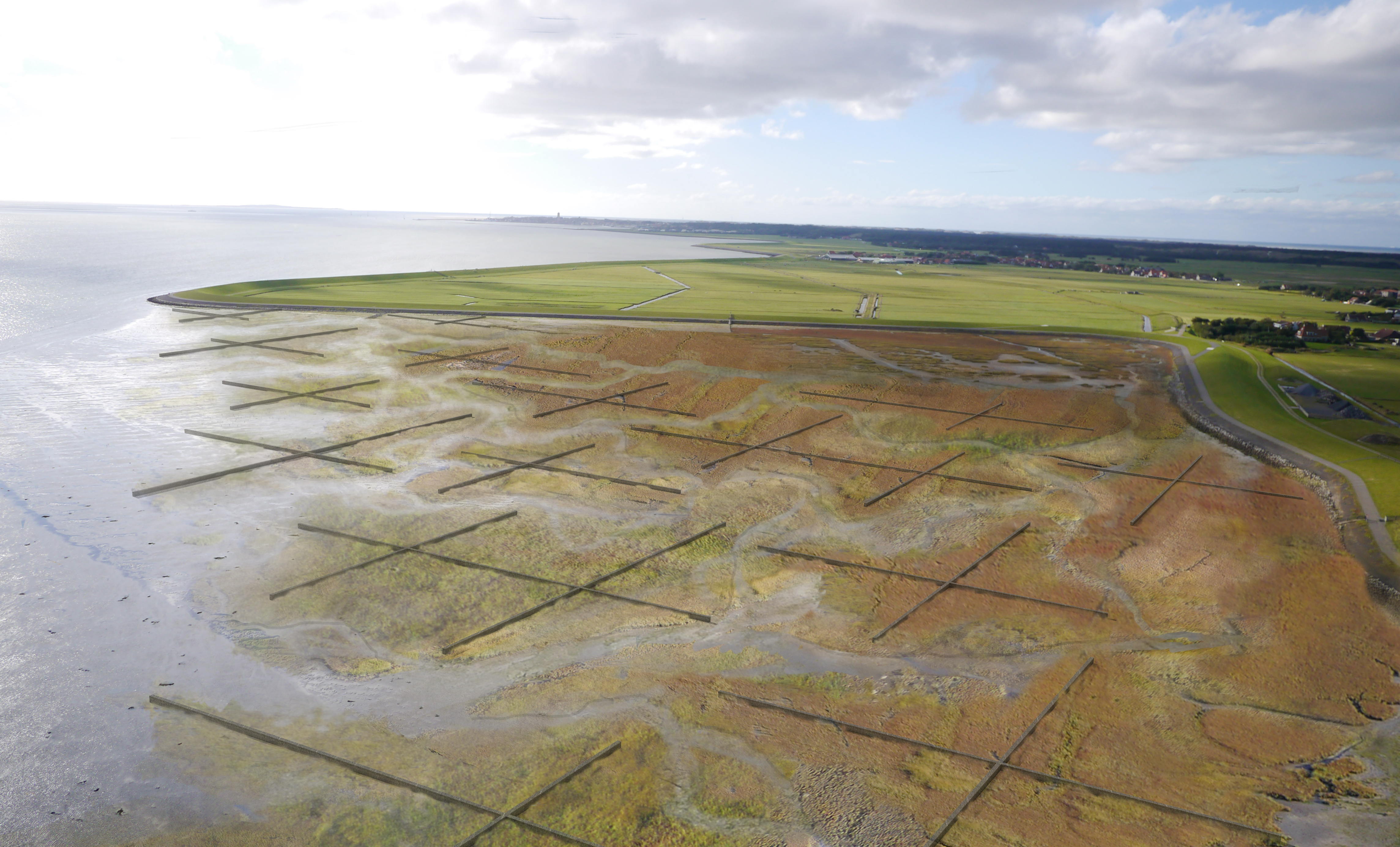
‘Windwerk’ is an installation where human actions and forces of nature captivatingly meet each other. Inspired by the metamorphose-drawings by M.C. Escher the geometric landscape of marram grass fields slowly transforms into a dune landscape with natural shapes. With the wind being the most important driving source.
A project, in which research and innovational landscape provides new insides into dune formation and dynamic coastal management. For more information: slem.org
